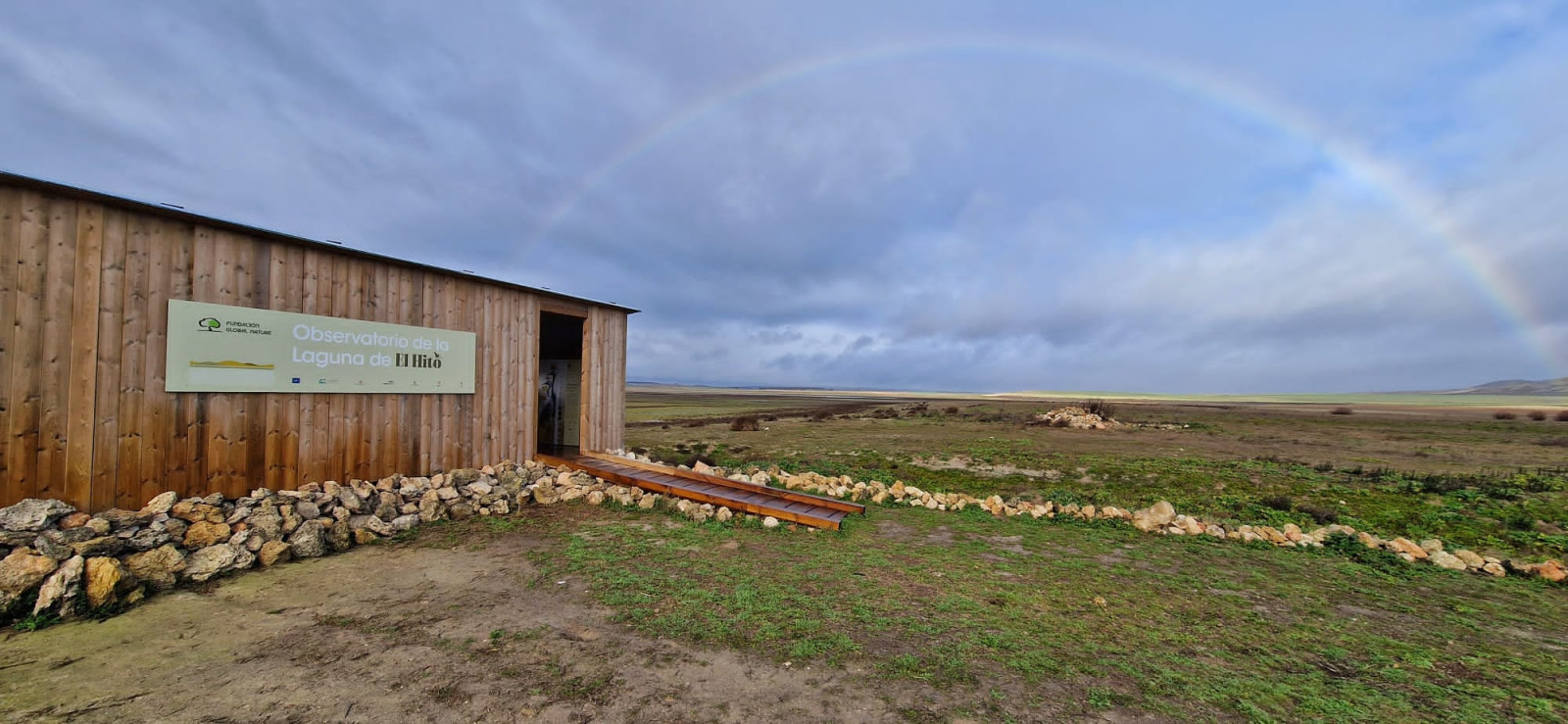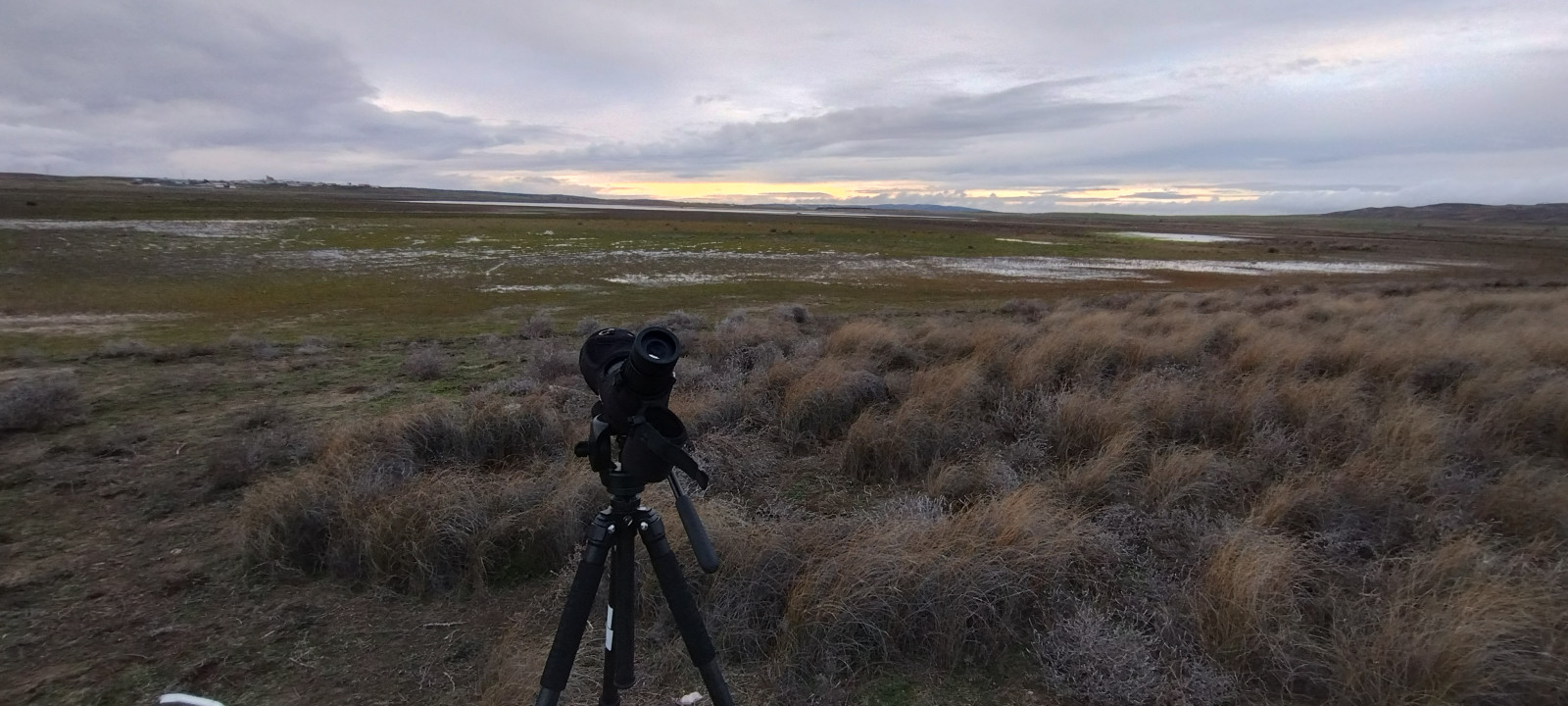Description
La Laguna de El Hito is a saline and seasonal inland wetland. Depending on the season and rains the flooded surface can reach more than 360 hectares. The lagoon is a migratory stop that connects the wetlands of the Ebro area with the westernmost part of the peninsula. In winter (from approximately November to February) you can enjoy the spectacle of roosting Common Crane, with up to 10,000 individuals. The wetland also hosts groups of ducks, waders and Eurasian Spoonbill. The Greater Flamingo, due in part to the drought in Doñana, has increased its colony exponentially. The waders are well represented. You can observe Northern Lapwing, Ruff, Avocet, Common Sandpiper, Common Redshank and many others.
It is a very large area so the observation distance is great, but the recent installation of interpretive panels and the new observatory has improved the observation of birds. The Common Crane will make a winter visit an unforgettable experience.
The lagoon is surrounded by inland saline steppes and dryland cereal crops, providing a paradise for steppe birds such as Little Bustard, Great Bustard, Stone-curlew and Black-bellied Sandgrouse. Also many raptors can be spotted. For eaxample Short-eared Owl, Spanish Imperial Eagle, Golden Eagle, Western Marsh Harrier and Montagu's Harrier.
_________________________
Espagnol: Parada en los pasos migratorios, hogar de aves esteparias, y uno de los mayores paraísos para la invernada de la grulla en la Península Ibérica. Se trata de un humedal salino, endorreico y estacional de interior. Sus particulares características le confieren un paraíso para las aves. Es una parada migratoria que conecta los humedales de la zona del Ebro con la parte más occidendal de la penísula y los pasos más al sur.
En invierno (desde noviembre a febrero aproximadamente) podemos disfrutar del espectáculo de las grullas en dormidero, que con una colonia invernante de hasta 10.000 ejemplares no dejará de sorprender al ornitólogo, aficionado y curioso visitante con su sonoro trompeteo. Acoge un buen grupo de anátidas y limícolas, y el flamenco debido en parte a la sequía de Doñana, ha aumentado su colonia exponencialmente. Encuentra una laguna de aguas someras y con abundante alimento, que hará las delicias de los visitantes.
Su marcada estacionalidad influye enormemente en la superficie inundada, que llega a alcanzar más de 360 hectáreas. Cucharas, azulones, cercetas comunes, tarros blancos, silbones y otras anátidas surfean las aguas de este humedal de interior. Las limícolas están bien representadas por avefrías, combatientes, avocetas, correlimos o archibebes son sólo ejemplo de ellos.
Es una lámina muy amplia por lo que la distancia de observación es grande, pero la reciente instalación de paneles interpretativos, la videoguía del espacio, el nuevo observatorio con más de 6 metros cuadrados de panel de aves ligadas al agua y el panel con la representación a escala real de la grulla hará una experiencia inolvidable, sin duda te llevarás una foto en él.
Está rodeada por estepas salinas de interior y cultivos cerealísticos de secano, proporcionando un paraíso para las aves esteparias. El esquivo alcaraván suena agudo en las mañanas primaverales, y las ruedas de las avutardas son un show inolvidable. Mochuelos, buho campestre. ratoneros, águilas real e imprerial, cernícalos, azor, aguilucho lagunero, cenizo o pálido son frecuentes de ver. Incluso en el busardo moro ha pasado la temporada estival en ocasiones.
Details
Access
La Laguna de El Hito is located in the vicinity of the A3, at kilometer 111. On the Madrid-Alicante highway, between Tarancón and Montalbo, take a turnoff in Villavieja towards El Hito. There is has a parking lot that can be accessed from the town of Montalbo. Click on the P in the map for directions. From the parking there there are two routes, one short and on foot to the observatory, and another that connects with the town of El Hito in just over an hour's walk. The latter can also be done by bicycle or car, but without a doubt doing it on foot will allow you to enjoy a great variety of passerines and increases the possibility of seeing many other birds.
_________________________
Espagnol: Está en las inmediaciones de la A3, a la altura del kilómetro 111. Cuenta con un aparcamiento habilitado al que se acceder desde la localidad de Montalbo. Desde ahí partes dos recorridos, uno corto y a pie hasta el observatorio, y otro conecta con la localidad de El Hito en poco más de una hora caminando. Este último puede hacerse también en bicicleta o coche, pero sin duda hacerlo caminando nos hará disfrutar de mucha variedad de paseriformes y aumenta la posibilidad de ver otras muchas aves.



